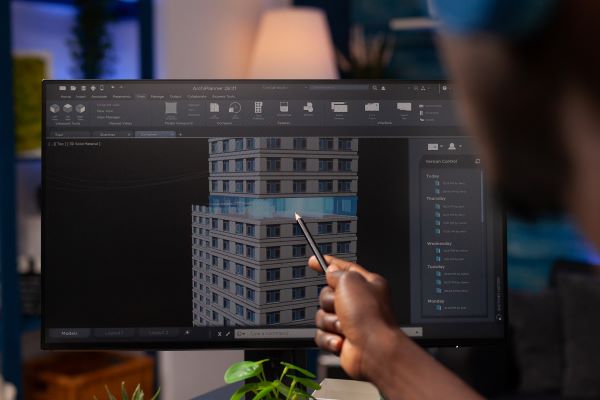How does architecture design influence the way we live, work, and connect with our surroundings?
Key Takeaways
- Architecture design is the art and science of shaping spaces for function, beauty, and sustainability.
- Modern architecture design blends tradition, technology, and eco-friendly practices to meet evolving needs.
- The design process—from concept to completion—requires collaboration, creativity, and technical expertise.
- Technology, such as BIM, VR, and 3D printing, is revolutionizing how architects visualize and deliver projects.
- Sustainable architecture design is essential for environmental stewardship and future resilience.
- Choosing the right architecture design firm is crucial for project success.
Introduction to Architecture Design
What is architecture design, and why does it matter so much in today’s world? At its core, architecture design is the thoughtful process of planning, conceptualizing, and creating buildings and spaces that serve both practical and aesthetic purposes. It’s not just about drawing blueprints or selecting materials; it’s about envisioning how people will interact with their environment, how communities will grow, and how cities will evolve.
In the United States and around the globe, architecture design plays a pivotal role in shaping skylines, neighborhoods, and even the way we experience daily life. From the homes we live in to the schools, hospitals, and offices we frequent, every structure is a product of deliberate design choices. According to the American Institute of Architects (AIA), modern architecture continues to evolve, emphasizing sustainability and innovation across all project types. The importance of architecture design extends beyond mere construction—it influences urban planning, environmental sustainability, and cultural identity.
Historically, architecture design has evolved alongside human civilization. Ancient wonders like the Pyramids of Giza and the Parthenon showcase early mastery of form and function. The Renaissance brought a renewed focus on symmetry and proportion, while the Industrial Revolution introduced new materials and construction techniques. Today, architecture design is at the intersection of tradition and innovation, balancing timeless principles with cutting-edge technology and a growing emphasis on sustainability.
As cities expand and populations grow, the demand for thoughtful, resilient, and beautiful architecture design has never been greater. The global architectural services market is booming, valued at over $421 billion in 2024 and projected to reach $643 billion by 2033, with the U.S. industry alone generating $65.7 billion in 2025 . This growth reflects the essential role architecture design plays in addressing challenges like urbanization, climate change, and the need for inclusive, adaptable spaces.
In this comprehensive guide, we’ll explore the key principles, styles, processes, and future trends shaping architecture design today. Whether you’re a homeowner, developer, or simply passionate about the built environment, understanding architecture design is the first step toward creating spaces that inspire and endure.
Key Principles of Architecture Design
Successful architecture design is grounded in a set of core principles that guide every decision, from the initial sketch to the final construction detail. These principles ensure that buildings are not only visually appealing but also functional, safe, and sustainable.
Functionality: Designing for Purpose and Usability
At its heart, architecture design must serve the needs of its users. Functionality means creating spaces that are practical, efficient, and tailored to their intended purpose. Whether it’s a family home, a bustling office, or a public library, the layout, flow, and features must support daily activities and enhance quality of life.
Aesthetics: Balancing Beauty and Form
While function is essential, so is form. Aesthetics in architecture design involves the thoughtful use of proportion, scale, color, texture, and light to create spaces that are visually pleasing and emotionally resonant. Great architecture design finds harmony between utility and beauty, elevating the ordinary into the extraordinary.
Sustainability: Incorporating Eco-Friendly Materials and Techniques
With growing awareness of environmental challenges, sustainability has become a cornerstone of modern architecture design. Sustainable architecture follows the principles of the U.S. Green Building Council (USGBC), emphasizing LEED-certified materials, energy efficiency, and waste reduction throughout a building’s lifecycle. This means selecting renewable or recycled materials, optimizing energy efficiency, and minimizing waste throughout a building’s lifecycle. Sustainable architecture design not only reduces environmental impact but also creates healthier, more resilient spaces for occupants .
Technology Integration: Smart Homes and Digital Design Tools
The digital revolution has transformed architecture design. Tools like Computer-Aided Design (CAD) and Building Information Modeling (BIM) enable architects to visualize, simulate, and refine their ideas with unprecedented precision. Smart home technologies, IoT devices, and automation systems are now seamlessly integrated into new designs, enhancing comfort, security, and energy management .
Structural Integrity: Ensuring Safety and Durability
No matter how beautiful or innovative a design may be, it must stand the test of time. Structural integrity ensures that buildings are safe, stable, and capable of withstanding environmental stresses. This involves careful engineering, material selection, and adherence to building codes and standards.
The Influence of Principles on Project Success
When these principles are thoughtfully applied, the result is architecture design that delights users, endures for generations, and contributes positively to the community and environment. Neglecting any one principle can compromise a project’s success, underscoring the importance of a holistic, balanced approach.
Different Types of Architecture Design Styles
Architecture design is as diverse as the cultures and climates it serves. Over time, distinct styles have emerged, each reflecting unique philosophies, technologies, and societal values.
Traditional Architecture Design: Colonial, Gothic, Classical
Traditional styles draw on historical precedents and time-honored techniques. Colonial architecture, with its symmetrical facades and gabled roofs, evokes early American settlements. Gothic design, characterized by pointed arches and intricate stonework, is often seen in cathedrals and universities. Classical architecture, inspired by ancient Greece and Rome, emphasizes columns, pediments, and harmonious proportions.
Modern Architecture Design: Minimalism, Contemporary, Industrial
Modern architecture design broke from tradition in the 20th century, embracing simplicity, open plans, and new materials like steel and glass. Minimalism strips away ornamentation, focusing on clean lines and uncluttered spaces. Contemporary design is ever-evolving, often blending elements from various eras and emphasizing flexibility and innovation. Industrial style celebrates raw materials, exposed structures, and utilitarian aesthetics.
Sustainable and Green Architecture Design
Sustainable architecture design prioritizes environmental responsibility. Features like green roofs, solar panels, and passive heating and cooling systems are common. Materials are chosen for their low environmental impact, and designs often incorporate natural light, ventilation, and connections to the outdoors .
Regional and Cultural Variations in Architecture Design
Architecture design is deeply influenced by local climate, culture, and history. In the American Southwest, adobe structures with thick walls provide insulation against heat. In the Pacific Northwest, timber and large windows connect homes to the surrounding forests. Indigenous and vernacular designs honor traditional knowledge and community values, as seen in co-designed projects with First Nations and Inuit communities in Canada .
Examples of Famous Buildings Representing Different Styles
- Entenza House (Case Study House #9), California: A modernist icon showcasing modular construction and open-plan living .
- Bosco Verticale, Milan: A sustainable residential tower with vertical gardens .
- The Edge, Amsterdam: A smart, energy-efficient office building .
- Kura Kura Badminton Court, Bali: Built from locally sourced bamboo, exemplifying sustainable regional design .
These examples illustrate the rich tapestry of architecture design, where tradition and innovation coexist to meet the needs of diverse communities.
The Architecture Design Process
Turning an idea into a finished building is a complex journey, requiring careful planning, collaboration, and technical expertise. The architecture design process typically unfolds in several key phases :
Initial Concept and Client Consultation
Every project begins with a conversation. Architects meet with clients to understand their needs, goals, budget, and vision. This stage sets the foundation for the entire process, ensuring alignment and clarity.
Site Analysis and Feasibility Studies
Next, architects assess the project site—its topography, climate, zoning regulations, and existing infrastructure. Feasibility studies determine what’s possible within the given constraints, helping to avoid costly surprises later.
Design Development and Drafting
With a clear brief and site analysis in hand, architects begin sketching concepts, exploring layouts, and refining ideas. This iterative process involves creating floor plans, elevations, and 3D models, often using digital tools like CAD and BIM for precision and collaboration .
Use of Software Tools (CAD, BIM) in Architecture Design
Modern architecture design relies heavily on technology. CAD software allows for detailed drawings and easy revisions, while BIM integrates all aspects of a project—design, materials, systems—into a single digital model. These tools enhance accuracy, coordination, and efficiency .
Review, Approval, and Revisions
Designs are presented to clients and stakeholders for feedback. Revisions are made to address concerns, optimize functionality, and ensure compliance with codes and regulations. This collaborative approach helps align expectations and avoid misunderstandings.
Construction and Project Management Phases
Once the design is finalized, detailed construction documents are prepared, and contractors are selected. Architects often oversee the construction process, conducting site visits, reviewing progress, and ensuring the project stays true to the original vision .
Post-Construction Evaluation
After completion, architects may conduct post-occupancy evaluations to assess performance, address any issues, and gather lessons for future projects.
This structured process ensures that architecture design is not just creative, but also practical, efficient, and responsive to client needs.
Role of Technology in Modern Architecture Design
Technology is revolutionizing architecture design, enabling architects to push boundaries, improve efficiency, and deliver smarter, more sustainable buildings .
Computer-Aided Design (CAD) and Building Information Modeling (BIM)
CAD and BIM are foundational tools in modern architecture design. CAD allows for precise drafting and easy modifications, while BIM creates a comprehensive digital model that integrates design, engineering, and construction data. BIM enhances collaboration, reduces errors, and supports sustainability by simulating energy performance and optimizing material use .
Virtual Reality (VR) and Augmented Reality (AR) for Client Presentations
VR and AR technologies bring designs to life, allowing clients to “walk through” spaces before they’re built. VR offers immersive experiences, while AR overlays digital information onto real-world environments, aiding in on-site inspections and real-time design adjustments .
3D Printing and Prefab Architecture
3D printing is transforming both model-making and construction. Architects can quickly produce detailed prototypes or even full-scale building components, reducing waste and enabling complex forms. Prefabrication—assembling building elements off-site—speeds up construction and improves quality control .
Smart Building Technologies and IoT Integration
The Internet of Things (IoT) connects devices and systems within buildings, enabling automation, real-time monitoring, and energy optimization. Smart lighting, HVAC, and security systems enhance comfort, safety, and efficiency, making buildings more responsive to occupants’ needs .
Artificial Intelligence (AI) and Generative Design
AI is increasingly used to generate design options, predict project outcomes, and optimize building performance. Generative design algorithms explore countless possibilities based on input parameters, expanding creative horizons and supporting data-driven decision-making .
Technology is not just a tool—it’s a catalyst for innovation, collaboration, and sustainability in architecture design.
Sustainable Architecture Design: Future Trends
Sustainability is no longer a trend—it’s a necessity. As climate change and resource scarcity intensify, architecture design must prioritize environmental stewardship and resilience .
Importance of Green Architecture Design for the Environment
Buildings account for a significant share of global energy use and carbon emissions. Sustainable architecture design aims to minimize this impact by reducing energy consumption, conserving water, and using eco-friendly materials .
Use of Renewable Materials and Energy-Efficient Designs
Innovative materials like cross-laminated timber, mycelium composites, and recycled steel are gaining popularity. Energy-efficient designs incorporate high-performance insulation, passive solar strategies, and smart energy management systems .
Passive House Design Principles
The Passive House standard emphasizes airtight construction, super-insulation, and heat recovery ventilation to achieve ultra-low energy use. These principles are increasingly adopted in both residential and commercial projects .
Integration of Solar Panels, Rainwater Harvesting, and Green Roofs
Renewable energy systems, such as solar panels and geothermal heating, are now common features. Rainwater harvesting and greywater recycling reduce potable water demand, while green roofs and living walls provide insulation, manage stormwater, and support urban biodiversity .
How Sustainability Shapes Future Architecture Design
The future of architecture design is defined by carbon-neutral buildings, regenerative design, and circular economy principles. Architects are expected to deliver projects that are not only beautiful and functional but also ecologically responsible and resilient to future challenges .
Challenges in Architecture Design and How to Overcome Them
Despite its many rewards, architecture design is fraught with challenges. Economic volatility, technological disruption, regulatory complexity, and shifting client expectations all test the resilience and adaptability of architects and firms .
Budget Constraints and Cost Management
Rising material costs, inflation, and supply chain disruptions can derail project budgets. Effective cost management, transparent fee structures, and value engineering are essential for keeping projects on track .
Regulatory and Zoning Compliance
Navigating building codes, zoning laws, and permitting processes adds complexity and risk. Early engagement with code consultants and proactive compliance strategies help avoid costly delays .
Balancing Innovation with Practicality
Clients often desire cutting-edge designs, but practical considerations—budget, constructability, maintenance—must be balanced. Successful architects communicate the long-term value of thoughtful design and offer tiered service packages to accommodate different needs .
Managing Client Expectations
Clear communication, regular updates, and collaborative decision-making are key to managing expectations and building trust. Architects who listen, educate, and involve clients throughout the process foster smoother, more satisfying outcomes .
Solutions and Best Practices in Architecture Design Projects
- Embrace lifelong learning and technological adaptation to stay competitive .
- Foster a culture of inclusion and talent development to attract and retain top talent .
- Advocate for the value of design by demonstrating ROI and sharing success stories .
- Strengthen collaboration and early involvement with all stakeholders .
- Integrate sustainability at every stage of the project .
By adopting these best practices, architects can navigate challenges and deliver projects that stand the test of time.
How to Choose the Right Architecture Design Firm
Selecting the right architecture design firm is a critical decision that can make or break your project. Here’s what to consider :
What to Look for in an Architecture Design Firm
- Relevant Experience and Specialization: Choose a firm with a proven track record in your project type—residential, commercial, institutional, or sustainable design.
- Portfolio and Design Style: Review past projects to ensure their aesthetic and functional approach aligns with your vision.
- Reputation and Client References: Look for positive testimonials, industry recognition, and a willingness to provide references.
- Talent and Team Composition: Ensure the team includes experienced professionals with the right skills for your project.
Importance of Portfolio Review and Experience
A firm’s portfolio is a window into their creativity, quality, and versatility. Look for diversity, innovation, and projects that resonate with your goals .
Client Collaboration and Communication Skills
Effective communication and collaboration are essential for translating your ideas into reality. Choose a firm that values your input, maintains transparency, and responds promptly to questions and concerns .
Value for Cost and Timeline Management
Understand the firm’s fee structure, project management processes, and commitment to meeting deadlines. The lowest bid isn’t always the best—prioritize value, quality, and reliability .
By carefully evaluating these criteria, you can select an architecture design firm that becomes a trusted partner in realizing your vision.
Conclusion and Call to Action
Quality architecture design is the foundation of vibrant, resilient, and inspiring communities. It shapes the way we live, work, and connect with one another, balancing function, beauty, and sustainability. As the world faces unprecedented challenges—from urbanization to climate change—the role of architecture design has never been more vital.
Whether you’re planning a new home, a commercial development, or a community space, investing in professional architecture design services ensures your project is thoughtful, efficient, and future-ready. The right design can enhance well-being, reduce environmental impact, and create lasting value for generations to come.
Ready to bring your vision to life? Contact our team today for expert architecture design solutions tailored to your needs. Let’s build a better future—one space at a time.



